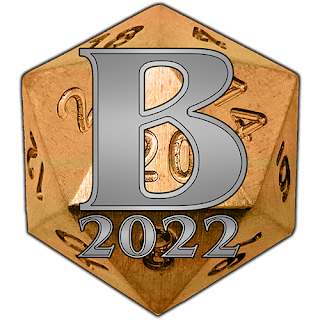I was tempted to chip in for a copy of my own back then but held off, just to regret it almost immediately. After everything I'd heard from Staats and about the book, I really wanted a copy, but I figured that I'd just have to wait until the public release on Amazon. I remembered to check back a couple of times but at no time was it marked as available yet.
Interestingly it was while I was visiting a friend's house and watching a YouTube video there without adblock on that I saw an ad for the book, immediately prompting me to go, "Oh, it's finally out?!", at which point I instantly went to Amazon and ordered my own copy. Unfortunately Amazon.co.uk only had the Kindle version available (and according to the author himself that won't change any time soon), but the US site also offered shipping to the UK so I went for that.
Product picture from Amazon.
Including shipping, I thought that the price of nearly £50 was pretty steep even for a big hardcover, but I can't say that I've regretted my purchase. It's not really one of those glossy coffee table books - while there are interesting images inside, they are mostly low-res screenshots and grainy, twenty-year-old photos - but the content was absolutely worth it to me.
Staats documents the development of WoW from 2000, when he joined Blizzard as a 3D environmental artist, to its launch in late 2004. The short chapters, sometimes only 1-2 pages long, attempt to document events in chronological order, though many tend to cast a spotlight on different aspects of the project that were going on simultaneously to an extent, such as zone design and creation of character models.
If there's one overarching lesson I came away with is that it's a minor miracle that WoW, or any MMO for that matter, has been made at all, considering how many different parts needed to be co-ordinated and required constant refinement and iteration until launch (and sometimes even afterwards). It really makes you respect the people involved all the more.
The subject of crunch - an uncomfortable discussion point in game industry circles in recent years - also came up somewhat to my surprise. While Staats made a point of saying that overtime was largely voluntary and driven by passion for the project, he does also admit that this wasn't always the case, and that other times people were just dispirited by the long hours required to hit some new deadline. I had thought that this sort of working environment was a recent trend brought on by corporate greed, but clearly practices like these have been part of game development for much, much longer.
Still, for the most part the book is quite cheerful and light-hearted, featuring amusing anecdotes about goings-on in at the then still quite small Blizzard offices and fascinating insights into why certain features of WoW came out the way they did. To think that all these years I could have avoided getting lost in Wailing Caverns by simply following the mushrooms!
The one slight criticism of the book I have is that the amount of name-dropping, while clearly meant to simply give credit where it's due, can sometimes be overwhelming, as it can be hard for the casual reader to remember the names of every dev and artist the author mentions throughout the book and then make sense of what it means when he says that so-and-so also worked on feature X.
That said, when you do know who he's talking about it's super interesting. I had to smile when he mentioned John Smedley and Brad McQuaid being nosy on more than one occasion, and I did a double-take when he mentioned someone called Michael Backus being part of the early quest team - the same guy who used to work at Bioware and whom I once interviewed on the subject of flashpoints.
I can heartily recommend this book to anyone who's a big fan of old-school World of Warcraft or the MMO genre in general. The insights it provides are quite amazing.








Now I have another book to be added to my "to be read" pile. I guess I know what I'll be doing this Winter....
ReplyDeleteI haven't read this book yet but it sounds like you would like "MMOs from the Inside Out" and maybe "MMOs from the Outside In". These are written by Richard "Bartle Test" Bartle.
ReplyDeleteThanks for the recommendation; I've added both to my re-read list.
Delete